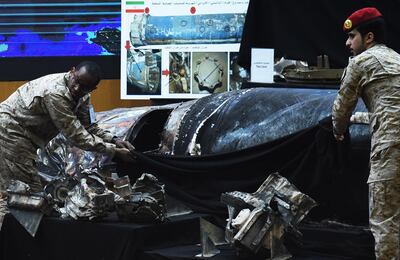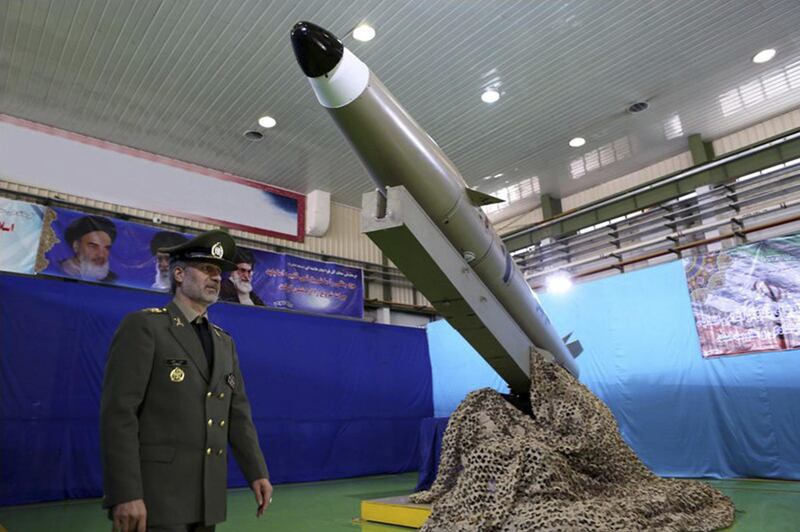Iran has given ballistic missiles to proxies in Iraq and is developing production lines to build more there and in Syria to deter attacks on its interests in the Middle East and to allow it to strike at regional foes.
The move will exacerbate tension between Tehran and Washington, already heightened by US President Donald Trump’s decision to pull out of a 2015 nuclear deal with world powers.
It will also embarrass France, Germany and the UK – the three European signatories to the nuclear deal – as they have been trying to salvage it despite new US sanctions on Tehran.
Iran transferred short-range ballistic missiles to militias in Iraq over the past few months and is helping them to make their own, sources in Iran and Iraq say.
“The logic was to have a backup plan if Iran was attacked,” a senior Iranian official said. “The number of missiles is not high, just a couple of dozen, but it can be increased if necessary.”
_______________
Read more:
[ French Foreign Minister: Iran cannot avoid talks on missiles and meddling ]
[ Iran tested anti-ship missiles in Strait of Hormuz ]
[ Iran reveals first domestic fighter jet in show of force ]
_______________
Iran previously said its ballistic missile activities were purely for defence.
The Zelzal, Fateh-110 and Zolfaqar missiles have ranges of between 200 and 700 kilometres, putting Saudi Arabia’s capital Riyadh or the Israeli city of Tel Aviv within striking distance if the weapons were in southern or western Iraq.
The Quds Force, the overseas arm of Iran’s powerful Islamic Revolutionary Guard Corps, has bases in both those areas. Quds Force commander Qassem Soleimani is overseeing the programme, sources said.
Iran has been found to be transferring missiles and technology to Syria and other allies of Tehran, such as the Houthi rebels in Yemen and Lebanon’s Hezbollah.
On Friday, The Times reported Iran is building a missile factory in Syria in an area protected by Russia's air defence shield.
Satellite imagery showed the base under construction in Baniyas, northwest Syria. Israel, which has struck suspected Iranian and Hezbollah targets in Syria over 100 times in recent years, will view the base as a threat. But it may prove a difficult target given the Russian S-400 aerial defence system, installed to protect Kremlin assets in Syria.
Both Israel and Iran's Gulf Arab neighbours view Tehran’s movements in the region as a threat to their security.
Israeli Prime Minister Benjamin Netanyahu said on Wednesday that anyone who threatened to wipe Israel out “would put themselves in a similar danger”.
A western source said the missile transfers were designed to send a warning to the US and Israel, especially after air raids on Iranian troops in Syria.
The US has a significant military presence in Iraq.
“It seems Iran has been turning Iraq into its forward missile base,” he said.
A decision was made about 18 months ago to use Iran-backed militias to produce missiles in Iraq, but activity increased in the past few months, including the arrival of missile launchers.
“We have bases like that in many places and Iraq is one of them. If America attacks us, our friends will attack America’s interests and its allies in the region,” said a senior Revolutionary Guard commander.
Factories to develop missiles in Iraq were in Al Zafaraniya, east of Baghdad, and Jurf Al Sakhar, north of Karbala, sources said. There is also a factory in Iraqi Kurdistan.
The areas are controlled by Iran-backed militias, including Kataeb Hezbollah, one of the closest to Tehran. Three sources said Iraqis had been trained in Iran as missile operators.
The Iraqi intelligence source said the Zafaraniya factory produced warheads and ceramics for missile moulds under former Iraqi president Saddam Hussein. It was reactivated by local Shiite groups in 2016 with Iranian assistance, a source said.
A team of Shiite engineers who used to work at the factory under Saddam were brought in to make it operational again, the source said. He said missiles were tested near Jurf Al Sakhar.
A US official confirmed that Tehran had transferred missiles to groups in Iraq. Washington has been pushing its allies to adopt a tough anti-Iran policy since it reimposed sanctions this month.
While the European signatories to the nuclear deal have so far baulked at US pressure, they have grown increasingly impatient over Iran’s ballistic programme.
France in particular has bemoaned Iranian “frenzy” in developing and propagating missiles, and wants Tehran to open negotiations over it.
“Iran needs to avoid the temptation to be the regional hegemon,” French Foreign Minister Jean-Yves Le Drian said on Thursday.

In March, France, Germany and the UK proposed new EU sanctions on Iran over its missile activity, although they failed to push them through after opposition from some member states.
“Such a proliferation of Iranian missile capabilities throughout the region is an additional and serious source of concern,” a document from the three countries said at the time.
Iran is also storing ballistic missiles in areas of Iraq that were under effective Shiite control, and had the capacity to launch them.
Baghdad had been aware of the flow of Iranian missiles to Iraqi militias fighting ISIS, but that shipments had continued after the extremist militant group was defeated, an Iraqi source said.
“It was clear to Iraqi intelligence that such a missile arsenal sent by Iran was not meant to fight Daesh militants, but as a pressure card Iran can use once involved in regional conflict,” the official said.
He said it was difficult for the Iraqi government to stop or persuade the groups to go against Tehran.
“We can’t restrain militias from firing Iranian rockets because simply the firing button is not in our hands. It’s with Iranians who control the push button,” he said.
“Iran will definitely use the missiles it handed over to Iraqi militia it supports to send a strong message to its foes in the region and the US that it has the ability to use Iraqi territories as a launch pad for its missiles to strike anywhere and any time it decides.
Iraq’s parliament passed a law in 2016 to bring an assortment of Iran-backed militias known collectively as the Hashed Al Shabi or Popular Mobilisation Forces into the defence forces.
The militias report to Iraq’s Prime Minister, who is a Shiite under the country’s unofficial governance system.
But Iran still has a clear hand in co-ordinating the forces’ leadership, which frequently meets and consults with Mr Soleimani.





